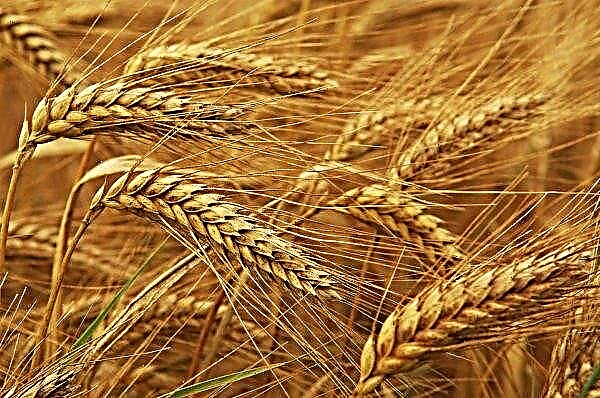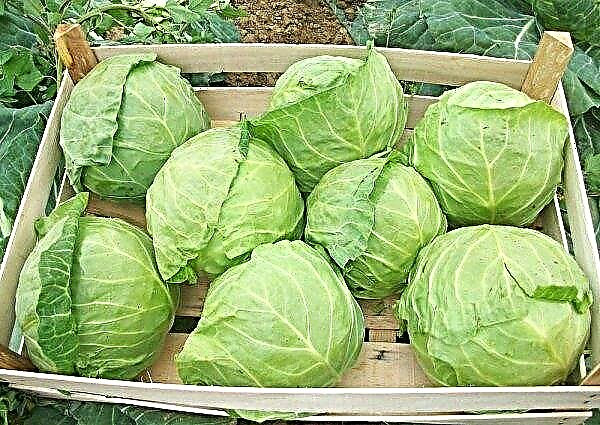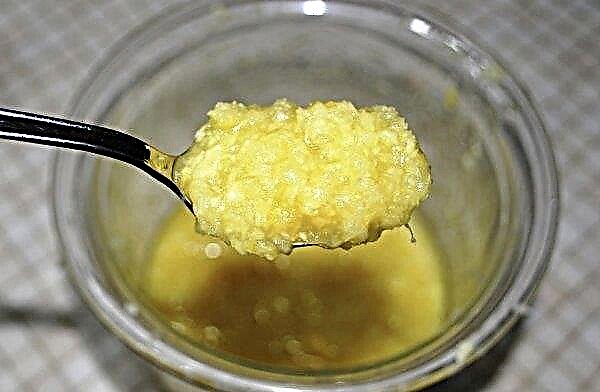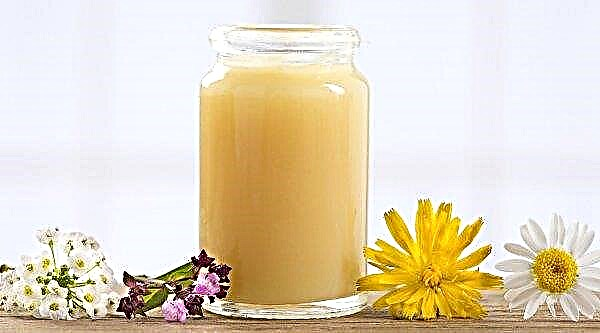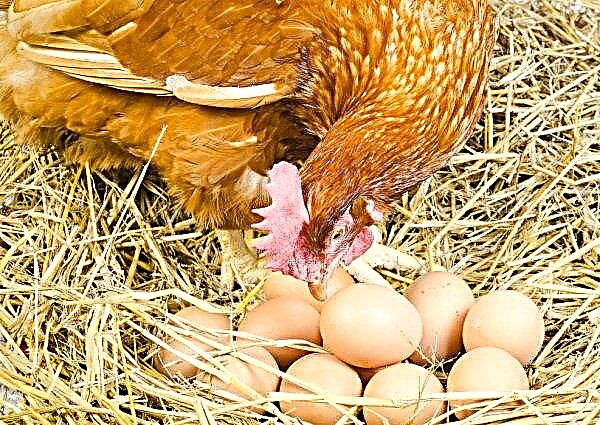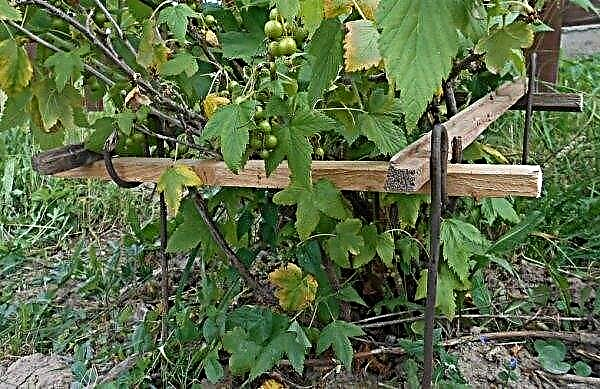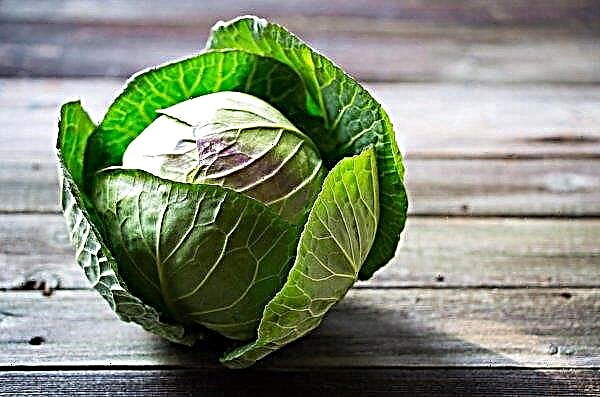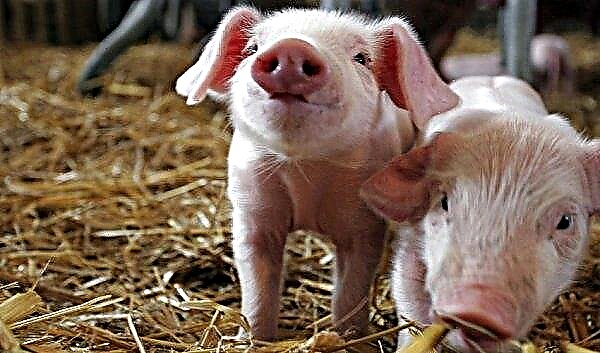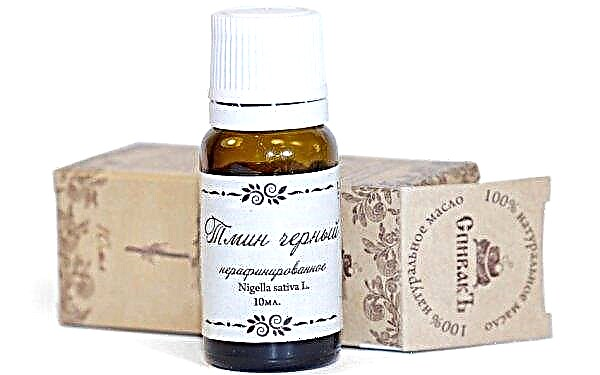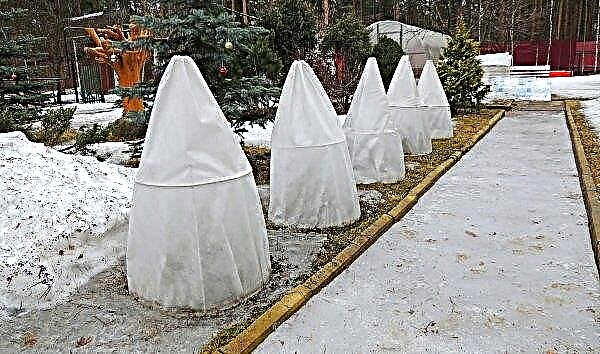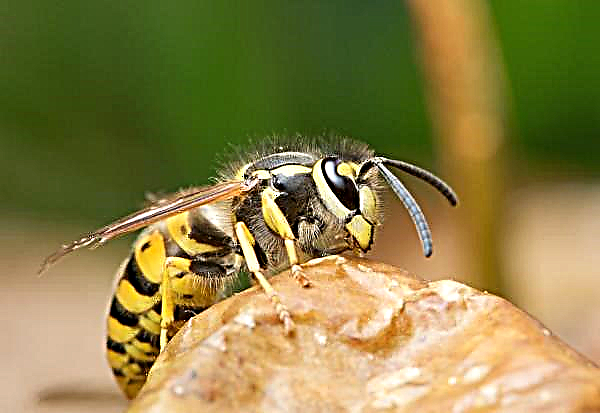Among the vegetables that are in every home, onions take the lead. It is practically indispensable and is used for the preparation of many dishes. Experienced gardeners prefer to grow Centurion onions in their gardens, which have many positive qualities. More details about this variety - in our material.
Grade description
Onion Centurion was bred by Dutch breeders. Belongs to early ripening and frost-resistant varieties. Reaches up to 80 cm in height, forming tubular feathers of dark green color. Externally, the fruits are slightly elongated with a golden husk. The weight of one root crop is from 90 to 130 g. The flesh is white, juicy.
- The advantages of this variety include the following:
- gives a good harvest;
- has high taste;
- resistant to underlying diseases;
- does not let the shooter;
- can be stored for a long time;
- it is used both in raw form and in heat treatment, for canning;
- grows in different climatic conditions;
- you can plant sowing to get winter onions;
- has a beautiful presentation.
The only drawback is that you need to buy seeds or seeds each year.
The peculiarity of this variety is considered to be a thin neck, due to which pests do not get into the pulp and rot does not occur, as well as a small bottom.
Onion characteristics and yield
Onion Centurion has the following characteristics:
- productivity - from 1 m² you can collect 4-5 kg of vegetables;
- ripening period - 90 days;
- has a two-year vegetative cycle;
- you can plant sowing in the winter, and you can in the spring.
Did you know? Onions contain more sugar than apples and pears, so when cooked, it becomes sweet.
Selection of planting material
The cultivation of this variety of onions is carried out for 2 years. In the first year, seeds are sown for germination of onion sets. In the second year, the sowing is planted and a full-fledged fruit is already formed from it.
Sevok
Onion sets are root vegetables of small sizes.
To get a high yield, he must have the following features and requirements:
- bulbs up to 2 cm in diameter;
- dry and rusty fruits;
- straw-colored husk;
- without damage.
Seeds
Choosing a quality seed is an important step in growing Centurion onions. Since this variety is hybrid, it is better to purchase seed in a special store. But if it was selected independently, then before sowing it is necessary to sort it out, to discard weak and inappropriate seeds.

Growing conditions
During the cultivation of this variety, you need to take into account some nuances:
- the optimum temperature for the development of root crops is the range of +12 ... + 16 ° C;
- it is necessary to provide bright and long-lasting lighting;
- during active growth, plants should be watered abundantly, and when bulbs are formed, watering should be reduced.
Soil and fertilizer
It is best to grow Centurion onions on sandy loam soil with a neutral level of acidity, since root crops poorly develop in an acidic environment, which will later negatively affect yield. Acidity can be reduced with the help of wood ash, manure or potassium-phosphorus fertilizers, adding them from autumn to planting.
Important! It is good to plant onions in the beds after tomatoes, cucumbers or potatoes.
Growing from seeds for seedlings at home
As mentioned above, Centurion onion belongs to varieties with a biennial vegetation cycle. In the first year, seeds are sown, following the necessary recommendations.
Seed preparation
Seeds for sowing are prepared in the following way:
- Soak in warm water during the day, adding any growth stimulant of your choice: Epin (1-2 drops per 100 ml of water), Biostim (0.5 ml of the mother liquor per 1 liter of water), Tsitovit (1 ml per 1 liter of water) or having stood in a weak solution of potassium permanganate.
- Wrap in natural cloth or lay on top, covered with a thin film, and hold for 3 days at room temperature.
- When small shoots appear, they can be sown in the ground.
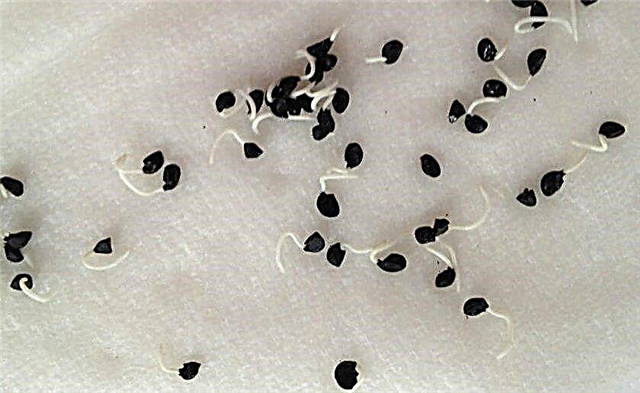
Content and location
It is possible to sow seeds in previously prepared open ground at the end of February or the beginning of March, since this variety can withstand low temperatures well up to -4 ° С. You can also sow in small containers: boxes, cassettes or containers.
Seed planting process
You need to sow Centurion onion seeds, adhering to the following requirements:
- Make furrows up to 3 cm deep.
- Maintain a distance between furrows of 25-30 cm.
- Sow seeds at a distance of 10 cm from each other.
- Cover the ground with earth, compact and moisten the soil.
Important! It should be borne in mind that the lower the temperature during sowing, the later the shoots will appear. Recommended temperature —+20 ... + 22 ° С.
Transplanting seedlings into the ground
Transplanted seedlings begin from mid-April to early May, after hardening it.
This process is carried out as follows:
- The bed is cleaned of weeds, loosened and fertilized.
- When the soil warms up to a temperature of + 15 ° С, furrows with a depth of 4 cm are prepared at a distance of 20–25 cm.
- Before planting seedlings, the earth is watered.
- Seedlings are planted at a distance of 10-15 cm from each other.
- Top with earth and slightly compacted.

Sevka cultivation and open field care
In the second vegetation year, in order to obtain full-fledged bulbs, plant seeds. For its cultivation, adhere to the rules, consisting of a correctly selected place of the beds, care for bulbs and fertilizer.
Site selection and soil preparation
The best place for growing onion sets is an open, sunny place, sheltered from strong winds and drafts. You should also adhere to crop rotation, which consists in the fact that you can plant bulbs in the same place only after 3 years. Before this, in the autumn, you need to prepare a garden bed, cleaning it of weed grass, fertilizing it with mineral substances, humus, wood ash, digging it deep.
Did you know? Onion juice can reduce pain and remove swelling from the bites of bees, wasps and bumblebees, by attaching an onion to a sore spot.
Preparation of sets
Before planting, the seeds are sorted and selected are the same bulbs up to 2 cm in diameter. Moreover, they should be without damage, without signs of disease, dry, with a golden husk. After that, they must be warmed up in a warm place.
The process of planting seed in the ground
When planting sowings in the ground, it is necessary to adhere to the following recommendations:
- Make furrows 4 cm deep.
- Between the furrows, maintain intervals of 25-30 cm.
- Watering the recesses.
- Plant the bulbs at a distance of 10 cm from each other and immerse them to a depth of 4 cm.
- Sprinkle on top of the soil, lightly tamp.
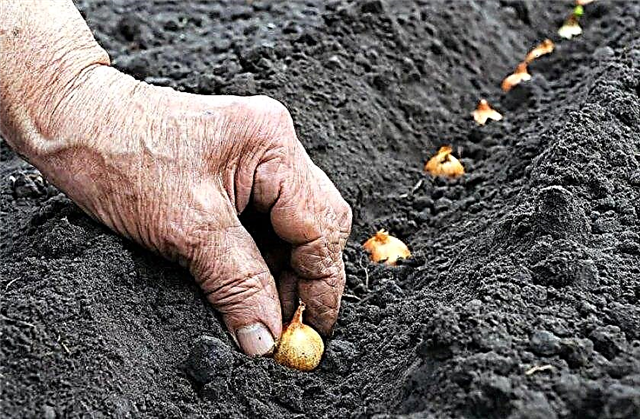
Watering
After sowing will be planted in open ground, it must be regularly and abundantly watered until the end of July. When large bulbs begin to form, watering needs to be reduced, and 3 weeks before harvesting, it should be stopped altogether.
Soil cultivation and weeding
A mandatory requirement for the care of seedlings is the constant loosening of the soil, carried out after each irrigation, in order to avoid the appearance of a crust on the surface of the earth and to provide the bulbs with oxygen. Weeding is carried out as weeds grow, and also to protect the crop from pests and decay.
Top dressing
Feeding Centurion onions is carried out several times.
Moreover, experts recommend alternating mineral fertilizers with organic:
- First feeding carried out 2 weeks after emergence with mineral fertilizers: ammonium nitrate (25 g), superphosphate (40 g), potassium chloride (20 g) per 10 liters of water.
- Second feeding It is carried out 2 weeks after the first with organic substances: 1 liter of manure is poured into 5 liters of water and insisted for 2-3 weeks, thus preparing the mother liquor, which then needs to be diluted with water in a ratio of 1: 6.
- Third - optional, but you can use complex preparations, for example, nitrophos (2 tbsp. Per 10 liters of water).
Important! It is better to feed onions with fertilizers in the form of solutions, since dry ones leave burns on plants.
Harvesting and storage
Onion Centurion ripens unevenly, so it must be collected selectively, focusing on the following points:
- when the feathers fade and begin to dry, then the root crop has already matured and can be plucked;
- it is necessary to pull out root crops carefully, slightly shaking the ground so as not to damage;
- Before hiding the crop in storage, the onions must be dried in a shaded place for 2-3 days;
- withered feathers should be trimmed, leaving a tip 4–5 cm long;
- Store preferably in a dark and dry place at a temperature of +1 ... + 3 ° C.
Possible growing problems
Like most vegetables, Centurion onions can be affected by diseases and pests:
- Onion fly - gets inside the bulb and eats its flesh. For preventive purposes, you can spray the soil with the insecticides “Mukhoed” (5 g per 1 m²) or “Terradox” (5 g per 1 m²).

- Peronosporosis - A disease that is manifested by the appearance of brown spots on the leaves. It is necessary to fight it with the help of the drug “Revus” (6 ml per 5 l of water) or 0.5-1% solution of Bordeaux mixture.
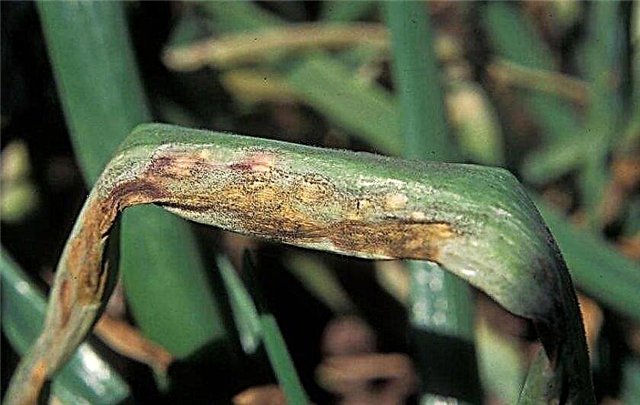
- Neck rot - occurs during storage of the crop in the form of the appearance of mold on the neck of the bulb. You can prevent the occurrence of this disease by selecting healthy and intact material for planting.

All of the above characteristics indicate that Centurion onions deservedly occupy an honorable place not only among gardeners who cultivate this variety, but also among housewives who value its fruits and use them for preparing various dishes.







